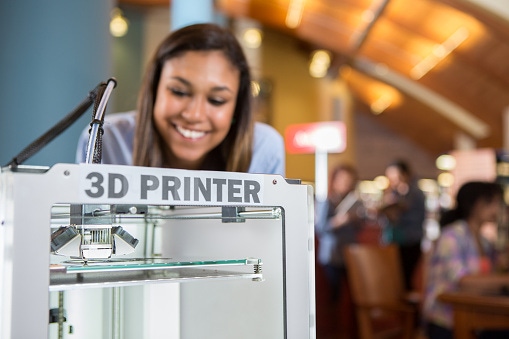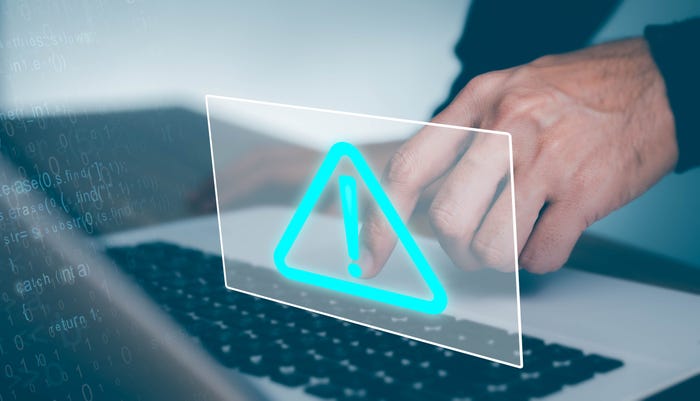Makerspaces are proving to be breeding grounds for a new wave of novel IoT devices.
August 10, 2019

As makerspaces pop up across the United States, they’re democratizing the equipment and skillsets people need to transform their ideas into physical objects. Increasingly, those objects are connected to the Internet, making them a breeding ground for IoT development.
“We have existed for so long in a virtual world — the Internet, software, apps, cloud — that the remarkable thing about the IoT is that there are things involved,” said Kim Brand, president of 1st Makerspace. “What demarcates the web from the world is that the world has things, and it’s difficult to deploy a device without the electronic circuitry, the enclosure, power supply, cable harnessing — things that occupy real 3D volumes — spaces.”
That’s where a makerspace comes in.
What Is a Makerspace?
“In general, I think of a makerspace as an open space that’s part classroom that attracts people who are creative, and who are a little pragmatic, and allows them to put their hands on tools and equipment and bring their ideas to life,” said Jason Pennington, executive director at Indiana IoT Lab. “A makerspace makes machinery, tools and software that in some cases could be cost prohibitive available to members and small businesses.”
Public makerspaces operate similar to a gym. For a monthly fee, members have access to equipment and classes. “Like golf courses, all makerspaces are different,” Brand explained. “They have different portfolios of tools. Some cater more to crafts and offer a kiln and ceramics, but they might also do electronics and have a few woodworking tools. It’s driven by the membership.” Other common tools include design software, coding hardware, laser cutters, 3D printers, welding equipment, test and measurement equipment, and metalworking.
Universities and libraries are increasingly offering makerspaces. “If you’re a student at Purdue, you have access to a $3 million makerspace, and it’s just awesome,” Brand said.
If college tuition is a bit beyond your means, not to worry. “A lot of libraries in the U.S. are starting to add makerspaces. For the price of a library card you can learn a new skill or fix something that’s broken,” Cruz said.
Education is a key component of makerspaces. “There’s a lot of skill involved in getting the tool to make the thing you want to make,” Brand said.
In addition to classes and training, makerspaces foster a sense of community. “Usually, experts are around to answer your questions. A makerspace is 50% tools and 50% community,” Brand said. “There’s always a member around that you can ask for help. That’s a byproduct of the makerspace.”
Who’s Using IoT Makerspaces and Why?
Makerspaces, in general, are used by students as well as adults. “Most kids come in with some curriculum that is aligned with standards. Bottom line, it has to be an educational experience. For adults, it’s about making something that they can show an investor or customer. Kids come in to learn something; adults come in to make something,” Brand said.
“Adults come in because they want to do something specific — for example, laser cut something, and then after they do that, they say, ‘Wow, I can do anything here,’ and that’s how they start down the path of becoming a maker,” said Mario Cruz, a.k.a. Mario the Maker, a member of Moonlighter. “People walk in for a sewing machine and end up learning how to use the laser cutter.”
A lot of what people are making is physical, but that’s starting to change as the cost of IoT sensors goes down. “Sometimes things go wrong, so that lowers the barrier of entry. If you fry it, it’s fine,” Cruz explained. “For $45 you can build something that’s pretty cool, where before you couldn’t even afford a sensor.”
Some projects built in makerspaces are driven by real-world problems leading to more IoT development. For example, Cruz is part of a team consisting of people from Moonlighter, Code for Miami and the Maker Faire Miami who are prototyping and building connected flood trackers. The trackers will measure water levels and share data with local responders in the city of Miami. The team is building a total of six trackers, two of which have already been field tested.
Gregory Johnson, project management lead at Code for Miami, writes, “Our goal is to show what can be done by everyday citizens, and a little code, while learning about the data gathered in the process.”
That appears to be the genius behind makerspaces: giving everyday citizens access to the equipment they need to simply make something.
“It’s self-expression, and it’s self-challenging because you don’t know you can’t do it, so you just try. Everyone is born with a couple hands, and 80% of the brain is attached to those hands, so it’s no surprise that making things is so engaging,” Brand said.
About the Author(s)
You May Also Like


.png?width=700&auto=webp&quality=80&disable=upscale)
.png?width=300&auto=webp&quality=80&disable=upscale)


.png?width=300&auto=webp&quality=80&disable=upscale)